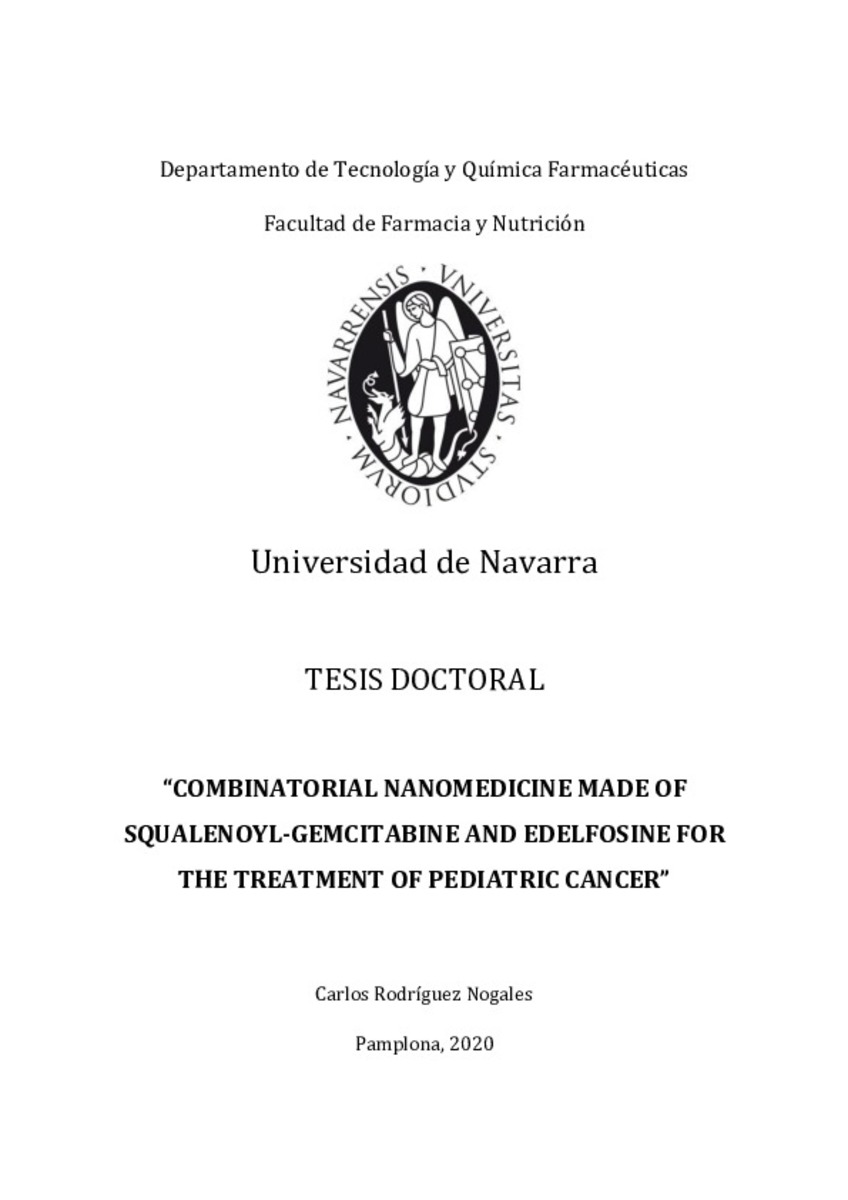Combinatorial nanomedicine made of squalenoyl-gemcitabine and edelfosine for the treatment of pediatric cancer
Palabras clave :
Fármacos sintéticos
Mecanismos de acción de la quimioterapia
Materias Investigacion::Química::Química orgánica
Cultivo celular
Fecha de publicación :
27-abr-2020
Fecha de la defensa:
6-mar-2020
Cita:
RODRÍGUEZ NOGALES, Carlos. “Combinatorial nanomedicine made of squalenoyl-gemcitabine and edelfosine for the treatment of pediatric cancer”. Blanco, M. y Couvreur, P. (dirs.). Tesis doctoral. Universidad de Navarra, Pamplona, 2020.
Aparece en las colecciones:
Estadísticas e impacto
0 citas en

0 citas en

Los ítems de Dadun están protegidos por copyright, con todos los derechos reservados, a menos que se indique lo contrario.








